Unity Adaptive Performance는 휴대기기에서, 특히 다양한 Android 생태계에 맞게 게임을 최적화하려는 게임 개발자를 위한 도구입니다. 적응형 성능은 게임이 기기 성능과 열 특성에 실시간으로 적응하도록 하여 원활하고 효율적인 게임 환경을 보장합니다. Android 제공업체는 Android 기기에서 적응형 성능을 구현합니다.
Unity 적응형 성능 사용 방법
적응형 성능 패키지 설치: Unity Package Manager로 이동하여
Adaptive Performance패키지를 설치합니다.Android 제공업체 설치: 패키지 관리자에서 적응형 성능 섹션을 찾아 Android 제공업체를 설치합니다.
적응형 성능 설정에 액세스: Unity 편집기에서 Edit(수정) > Project Settings(프로젝트 설정)로 이동하여 Adaptive Performance(적응형 성능) 섹션을 찾습니다.
성능 매개변수 설정: 타겟 프레임 속도, 화질 설정 및 기타 성능 기준과 같은 설정을 필요에 따라 조정합니다.
Unity Adaptive Performance는 제공자가 기기에서 필요한 모든 정보를 가져와야 합니다. Android 제공업체는 Adaptive Performance 5.0 이상에서 지원되며 Unity 2021.3 이상을 지원합니다. Unity 2021 및 2022 버전 패키지 관리자는 Adaptive Performance 4.0을 다운로드하므로 버전 5.0으로 수동 업데이트해야 합니다.
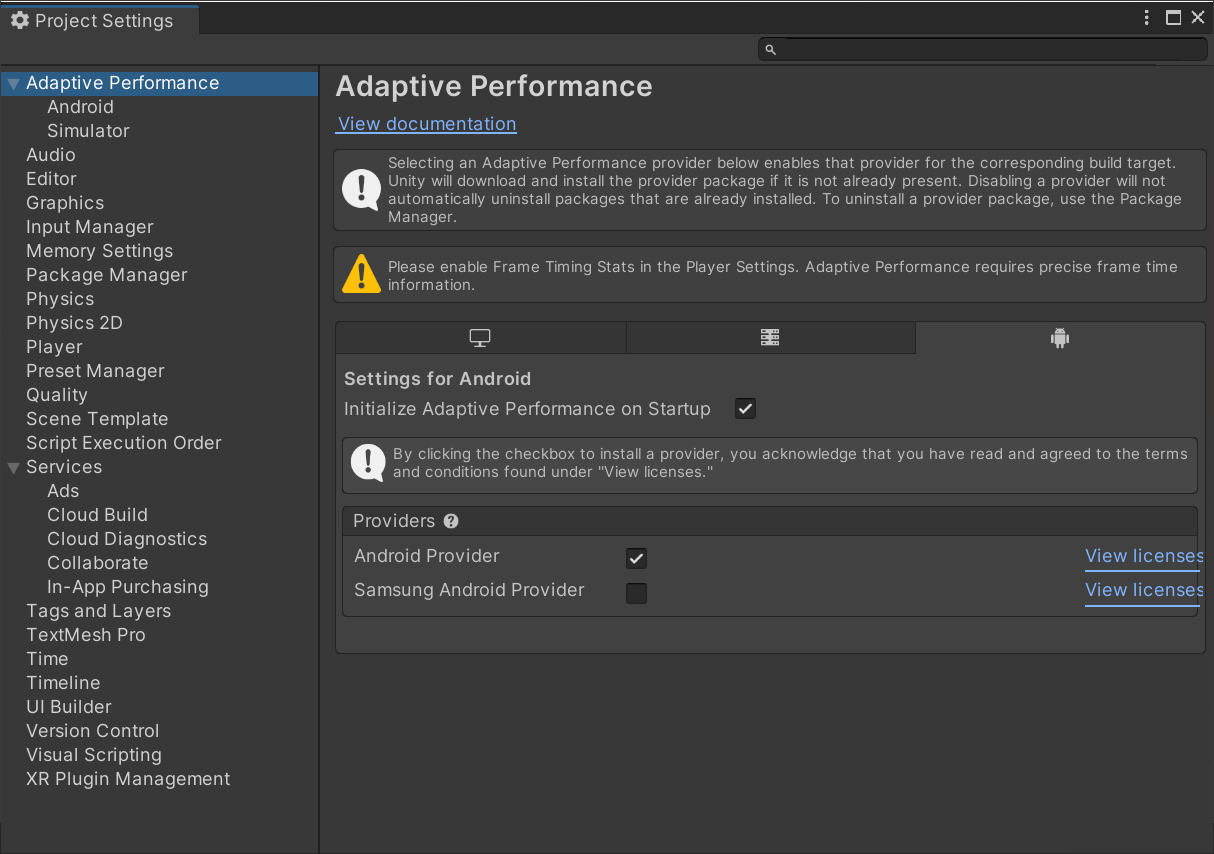
Android 제공업체 1.0 버전은 Pixel 기기에서만 사용할 수 있습니다. 따라서 최신 1.2 버전을 사용해야 합니다.
ADPF 성능 힌트 API
Android 제공업체는 기본적으로 ADPF 성능 힌트를 구현합니다. 제공자는 모든 프레임에서 CPU 및 GPU 기간을 합한 실제 지속 시간과 렌더링 프레임 속도의 목표 기간을 보고합니다.
프레임마다 렌더링 프레임 속도의 목표 기간입니다. (Performance Hint API를 참고하세요.)
그래픽 배율
Unity Adaptive Performance는 Framerate, Resolution, LOD 및 기타 프로필 속성을 위한 그래픽 스케일러를 제공합니다. 스케일러에는 최소 및 최대 배율이 있습니다. 각 배율은 기기 열 경고 수준과 열 추세에 따라 변경됩니다.
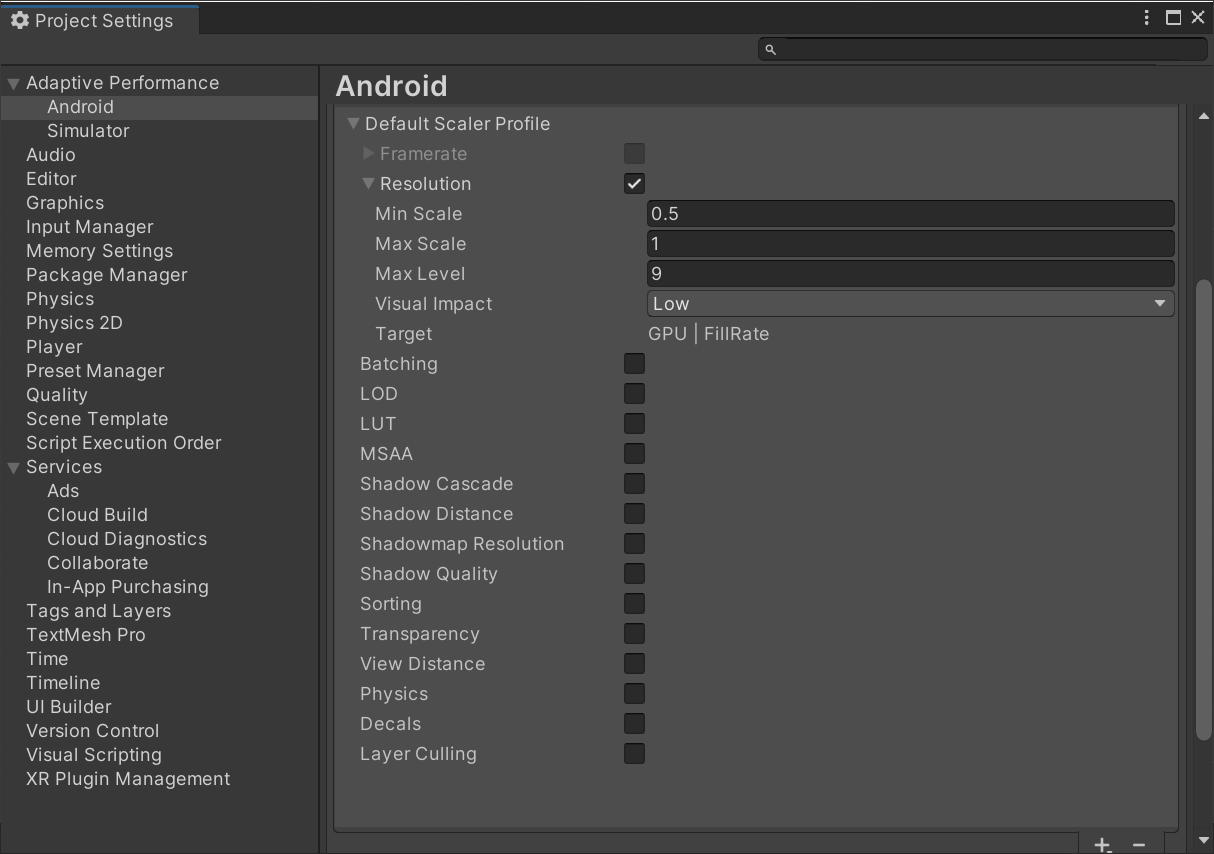
권장사항
플러그인은 열 제한을 방지하려고 하며 기본 구현으로 지속적인 타겟 FPS를 제공합니다. 즉각적인 결과를 얻으려면 ADPF를 기본 Unity 적응형 성능 확장 처리와 함께 사용하세요.
그러나 게임마다 다르기 때문에 ADPF가 게임에 동적 성능을 완전히 제공할 수 있도록 해상도, LOD, 그림자, 시야 거리와 같은 각 매개변수에 맞게 Unity 적응형 성능 스케일러를 미세 조정합니다.
다음은 ADPF Unity Adaptive Performance로 최상의 결과를 얻기 위한 세 가지 주요 단계입니다.
- 기준 설정: ADPF를 사용하기 전에 게임 성능을 철저히 프로파일링합니다. 이 데이터는 플러그인을 구현한 후 비교를 위한 중요한 벤치마크 역할을 합니다.
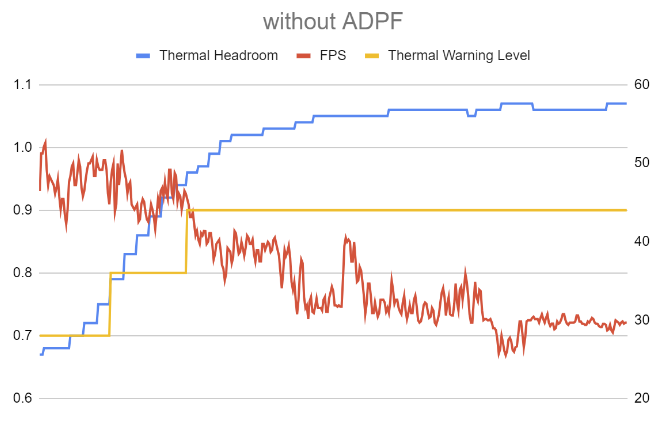
그림 3. 기준을 설정합니다. - Unity 적응형 성능 스케일러 활용: Unity 적응형 성능 스케일러로 실험하여 큰 노력 없이 성능상의 이점을 얻습니다.
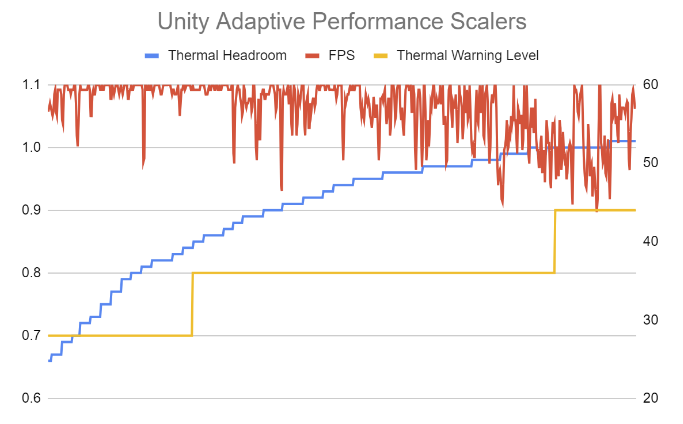
그림 4. Unity 적응형 성능 확장 처리를 활용합니다. - 인게임 그래픽 설정 우선순위 지정: 게임 내 그래픽 품질 수준을 최적화합니다. 이러한 설정은 게임의 콘텐츠에 맞게 맞춤화되므로 더 원활한 프레임 속도와 효과적인 열 관리를 보장합니다.
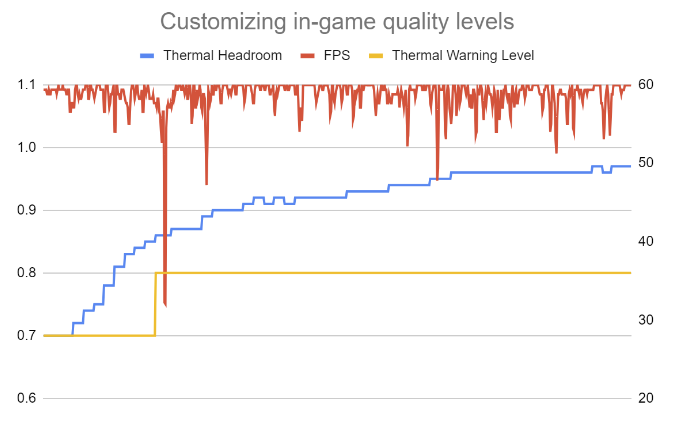
그림 5. 게임 내 그래픽 설정의 우선순위 지정
추가 리소스
Kakao Games Ares를 사용하여 Unity 적응형 성능을 사용하여 FPS 안정성을 96%까지 높인 방법을 알아보세요.

